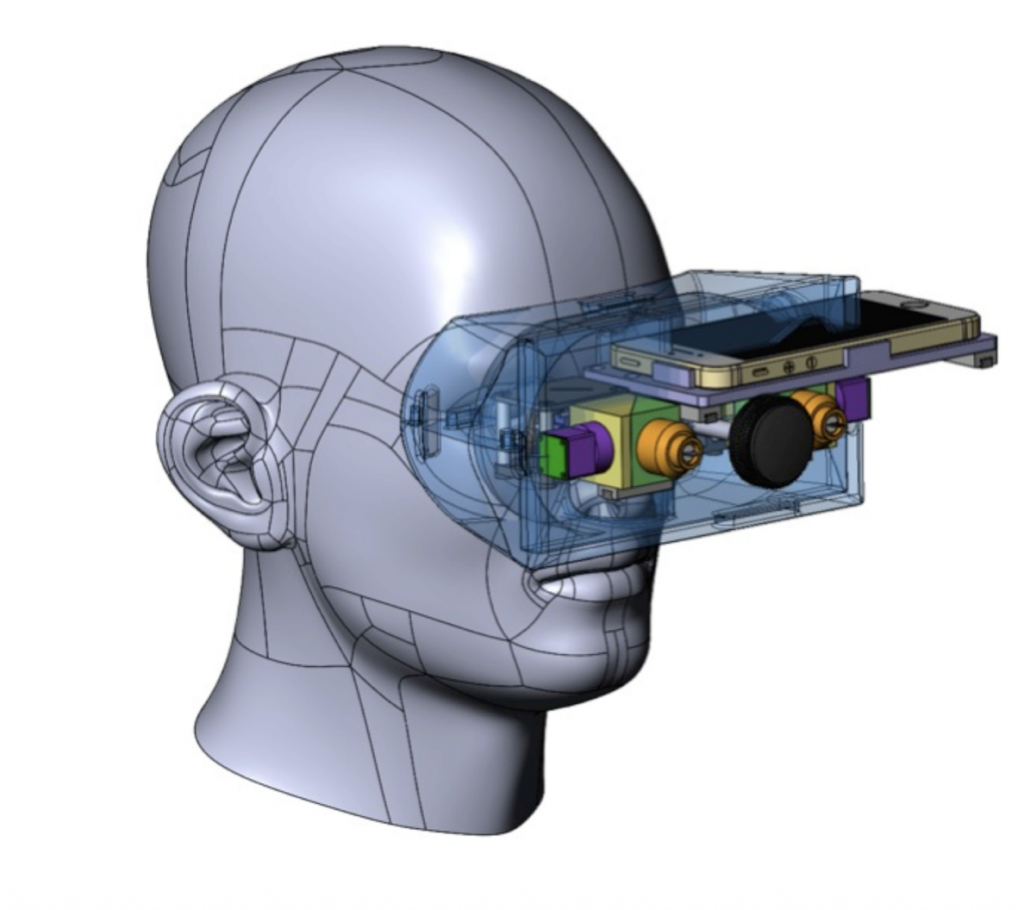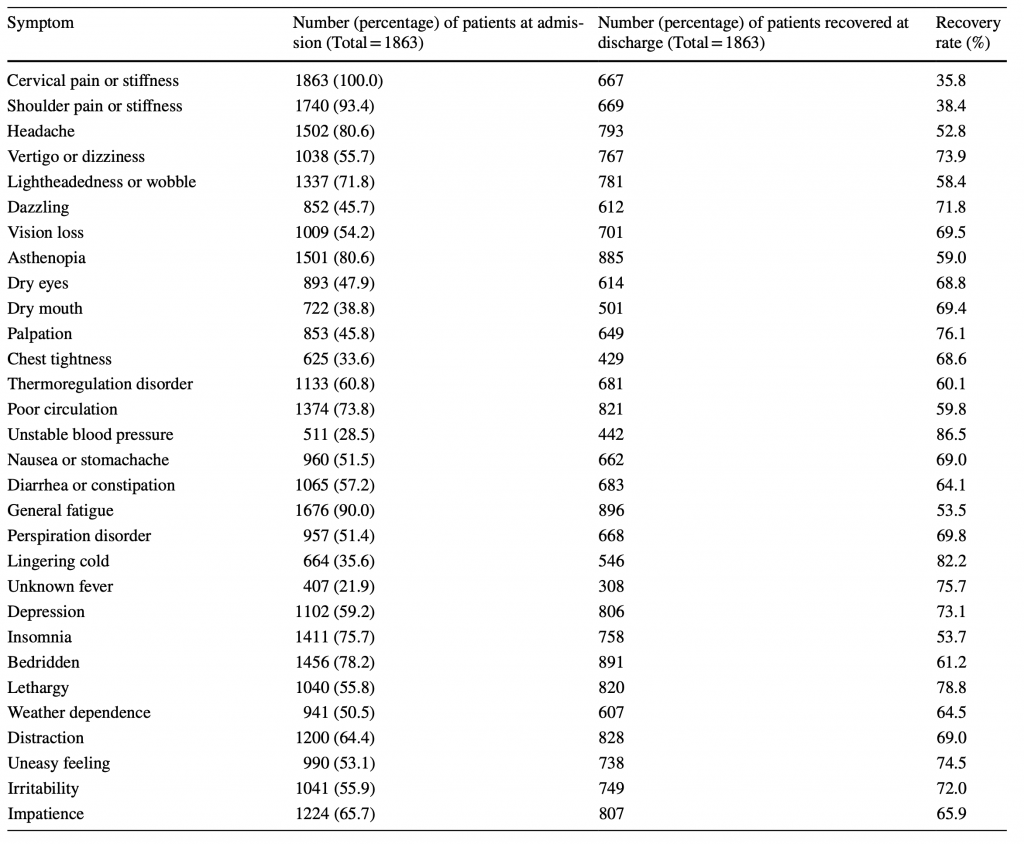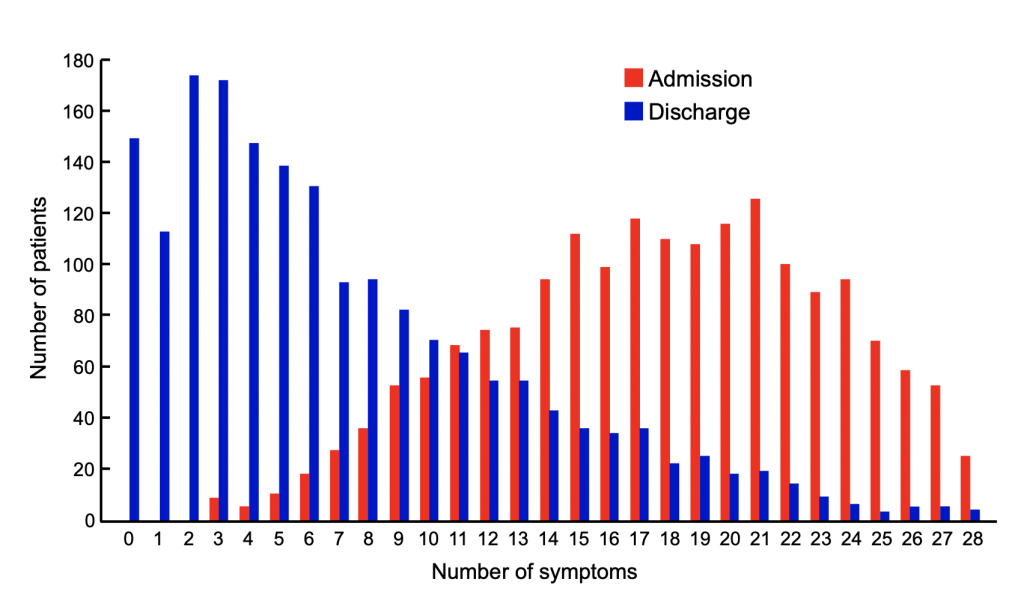
A January 2020 paper published in the European Spine Journal wanted to see if there was an association between symptoms throughout your body and muscle and joint dysfunction. If your neck is bothering you, will it bother your whole body?
In many ways, it makes sense. To start, your neck is awfully close to your brain, brainstem, and cerebellum, and thus there are a lot close connections between them. There are a few cervical spine reflexes between your neck and parts of your brain. Also, your neck is where your spinal cords runs through to feed nerve control over the rest of your body. If you start to develop degeneration of your cervical spine, this can lead to disabling, common, and costly conditions like central canal stenosis and lateral recess stenosis. Cervical degeneration can cause stiffness in your neck and even pain.
The authors of this paper bring up the following conditions that may be affected by a bad neck:
I don't know what dazzling means, but the authors do go on to say that in their clinical experience, "we have observed a poten- tial trend of indefinite whole-body symptoms occasion- ally coinciding with stiffness or tenderness of the cervical muscles on neck palpation, a routine diagnostic method in our institutions." Edit: Dazzling is when light is too bright for your comfort.
They say that your autonomic nervous system, which regulates visceral and unconscious actions throughout your body can become upset with neck injury. And dysautonomia will actually play a role in chronic low back pain, fibromyalgia, and brachialgia (arm pain.)
Your spine has a nerve outflow of your sympathetic nervous system in your thoracic spine, or your mid back. The sympathetic nervous system is your fight or flight system, and will speed up your heart rate, kick in your adrenaline's, and constrict blood flow to digestive organs to save blood for muscles.
However, you also have a "craniosacral" outflow of the parasympathetic nervous system. And, the cranial part of this, those nerves, will pass through the muscles in your neck.
So, they designed this study to look at neck muscle dysfunction, and to see if it correlates to whole-body symptoms. And, these patients are hospitalized patients who don't respond to other, more traditional therapies like pharmacological or behavioral strategies.
The researchers studied 1863 patients who were in the hospital in Japan with cervical disorders. They had them fill out a questionnaire with 30 different symptoms. they treated their neck problems with electrical stimulation therapy and far-infrared therapy. They didn't do any other therapies on these patients other than those two modalities. Along with the questionnaires, the researchers checked the patient's pupillary light reflex, which is a reliable and sensitive way to check the status of a patient's parasympathetic nervous system.
An example of a binocular pupillometer, which is used to measure the activity of the parasympathetic nervous system. From Investigative Ophthalmology & Visual Science, 2018

All patients had neck pain or stiffness. Most of them also had shoulder pain or stiffness or headaches. More than half of them had vertigo or dizziness. 71% of them had some degree of lightheadedness. 80% of them had optic fatigue. There's a long list of symptoms these people had. Check it out:

When these guys were doing treatment on their patients, you could see on the graph where the volume of symptoms in the patients moves the bell curve from the red zone with a mean of 19 total different symptoms, to a great reduction of a mean of 3-5 symptoms. (This is just my visual observation. I don't really know it that the mean...) Just take a look at this graph, and see how much of a shift them made in this sick population with just a really simple, and largely "ineffective" treatment for neck pain.

And amazingly, the neck pain recovery rate was only 35.8%, but some of the symptoms resolved in the 70 or 80% rate! This study shows us that local treatment on your neck muscles can create a resolution of a wide variety of whole-body symptoms. The researchers admit that other factors may be involved with this recovery, especially if only 35% of neck pain sufferers recovered. But, they also noticed that neck muscle elasticity and softness improved. These guys also take a really simplistic view of muscle and nerve pathology. They think that if a muscle is stiff, it will pinch a nerve. Fro example, they think that cervicogenic headaches are caused by the greater occipital nerve being pinched at the suboccipital muscles. I see it as a referred pain from tight and inflamed muscles being irritated by metabolic wastes causing pain. Tight muscles don't get that circulation.
They also have a hard time elucidating the psychological aspect of neck pain, post-traumatic stress, and the vagus nerve. How does all of this connect? Also, it must be said, there was no randomization, and no control group involved in this study. This is a big oversight that makes it a poor quality study, almost like a case report. But they couldn't just allow the hospitalized patients rest without any treatment. The mean length of time these people were hospitalized was 2 months, and some were at this hospital for over 3 months. Could it be that 3 months of rest was just what the body needed?
I question how this study would look with spinal manipulative chiropractic care. Could there be a bigger response due to the fact that getting your neck adjusted allows for an immediate improvement of neck range of motion? It could be, and that would be interesting to see.